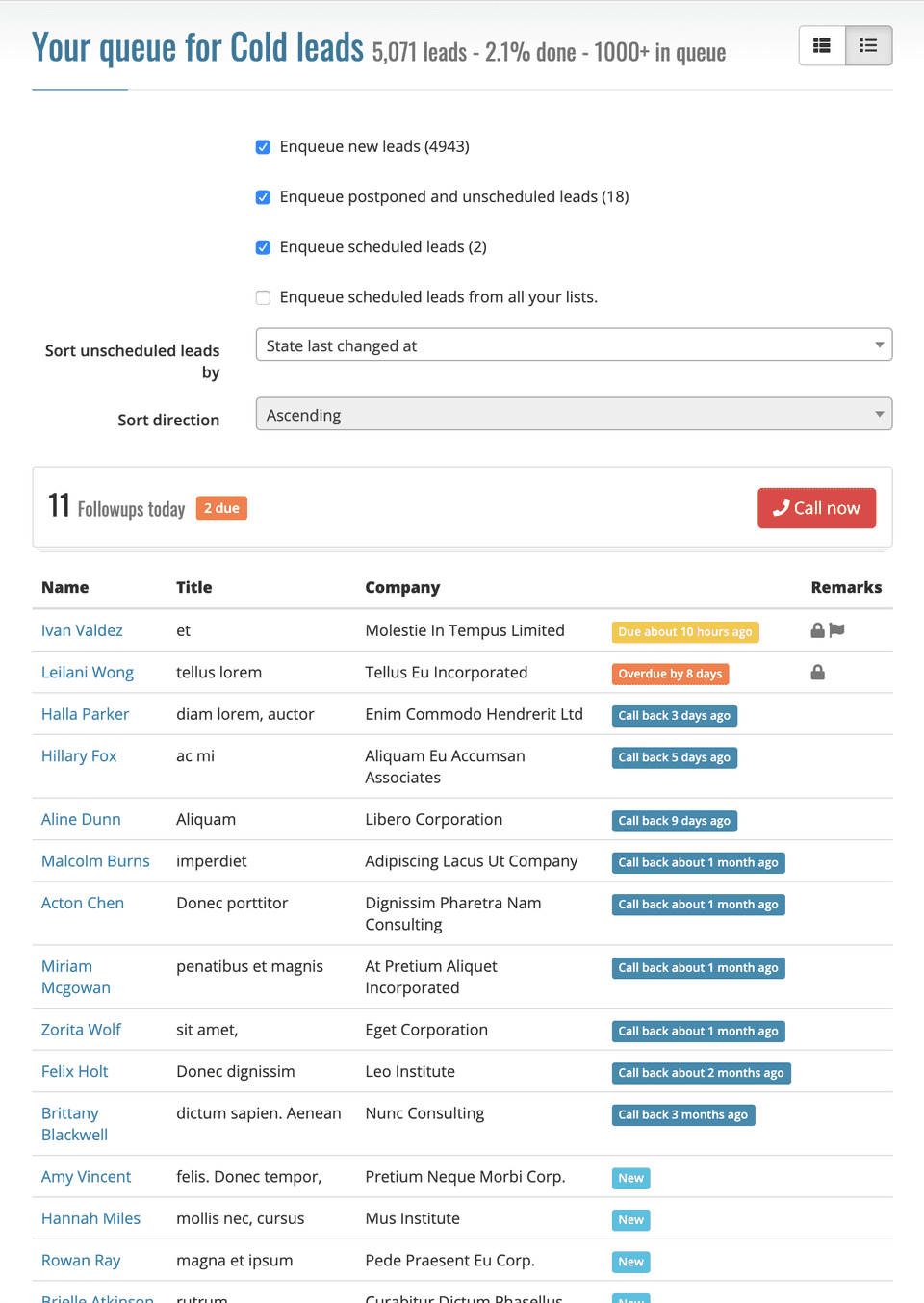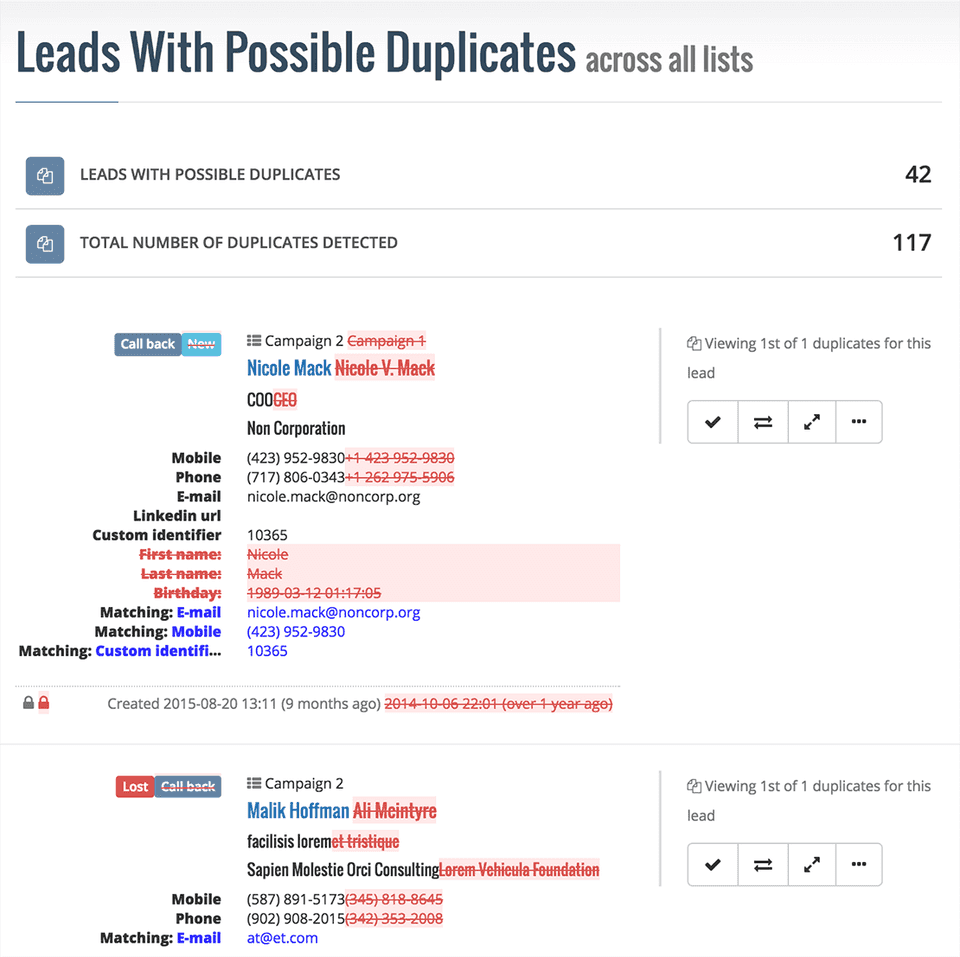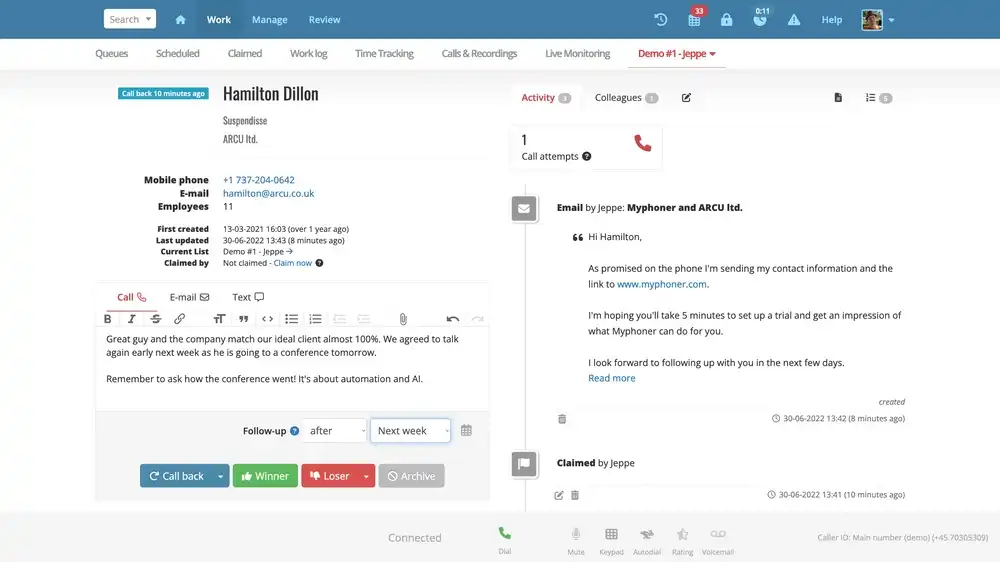Lead Routing Guide & Best Practices to Improve Sales

- November 8, 2023
Research from Workato has found that about 99% of organizations fail to call back or respond to inbound leads within five minutes. A lack of effective responsiveness is all it takes to miss out on potential sales and diminish your company’s reputation.
Fortunately, you can turn to lead routing to boost your lead response time and lead nurturing success. Essentially, lead routing is all about getting your sales leads to the right team members, and doing it quickly. Simple as that might sound, if you get it wrong, it's not just an admin headache. It could mean missed sales and less income.
Feeling curious? Read on to discover lead routing best practices, understand the challenges involved, and learn how to effectively increase revenue with lead routing software like Myphoner that strikes the perfect balance between complexity and user-friendliness.
What Is Lead Routing?
At its core, lead routing involves automatically assigning leads across your sales team. It’s beneficial for companies that have more than one sales approach–such as transactional, self-service, and enterprise–because you can easily connect potential customers to the appropriate sales model.
While lead routing can be simple by taking a round-robin approach of assigning to your sales reps based on who’s next in line, there are some complex models, necessary for large businesses, that take multiple factors into account. These factors can include customer type, location, industry, deal value, use case or a combination determined by a lead scoring system.
Lead Routing Examples
When it comes to an effective lead routing strategy, there’s no one-size fits all approach. The type of routing criteria you’ll choose will depend on factors such as your sales processes, team size and structure, business goals, and tech stack.
To help you get started, here are common lead routes often used to assign leads to the right sales reps:
- Lead routing by priority: When considering the priority of a lead, you would focus on aspects such as the lead’s position in their organization, engagement level with your products, their buying power, and product types they’re interested in.
Fortunately, Myphoner’s lead queue offers prioritization features and smart filters to help your sales agents consistently connect with high-potential leads.

- Lead routing by location: Assigning leads by geographical location allows for an easy scheduling of meetings without timezone being a hindrance. It’s also relevant for when in-person meeting or sales pitches are required so those involved won’t need to travel far.
- Lead routing by value: High-value leads often have more complex needs and require a greater amount of time to convert. By assigning leads by value, you can make sure high-value leads connect with the specialized sales reps and low-value leads can be assigned to self-serve marketing automation.
- Lead routing by use case or industry: Some businesses, particularly in SaaS, offer multiple relevant use cases. For instance, tools like Trello can be used for anything from student projects to software testing. Therefore, assigning leads to the appropriate industry expertise becomes crucial for such enterprise sales models.
- Lead routing by availability: Assign leads to the first available sales rep, using round robin lead distribution. Although this helps your team respond to requests faster, it shouldn’t be a first-case scenario for large businesses with multiple use cases.
- Lead routing by lead score: Lead scoring assigns a quantifiable value to every lead that’s generated for your business. The attributes considered in scoring include value, location, use case, product engagement and company size. This approach helps ensure a more tailored experience for your leads.
What are the Benefits of Lead Routing?
What's in it for you if you get automated lead routing right? Three things: you'll sell more, waste less time, and be better placed to grow. Let's break it down:
- Reach your potential customers before your competitors
- Prevent missing out on high-quality prospects
- Reduce time spent on manual lead reassignment
- Boost your sales team’s efficiency and productivity
- Speed up your sales pipeline to close more deals in a shorter time
- Create a positive experience for potential customers and boost your reputation
The ROI of Good Lead Routing Practices
Look, it's not just about making your team's life easier, though that's a big win. A well-executed lead routing strategy can significantly shorten the time it takes to contact a lead, improve your conversion rates, and even bump up customer lifetime value.
To see how well you're doing, track these key metrics. Regular updates, like adding more lead segments as your team grows, should be a feature of your system. This makes it easier to scale, keeps your team efficient, and boosts sales. Tracking key metrics is crucial to understanding if the segmentation and specialization of team members work as intended.
Lead Routing Best Practices
Picking the right way to route leads is essential. It's about finding a balance between powerful tools and ease of use. If you have a mid-sized sales team and want to grow without stumbling over tech or budget, keep reading.
Collect valuable information using form fields
According to research from Ruler Analytics, 84% of marketers leverage form submissions for effective lead generation. By adding the right form fields, you’ll have great opportunities to gather important information about your leads.
This doesn’t mean you should add many fields because this can drop your conversion rate; you can always ask for specific details down the road. It’s best to also stick to short-form questions so that analyzing responses isn’t time-consuming. Consider form fields such as:
- Job title
- Organization name
- Industry
- Organization size
- Location
- Product(s) they may be interested in
- A phone number or email to contact them
Use lead qualification to prioritize the right prospects
As your sales team’s time is extremely valuable, it’s important to ensure they spend it on high-value leads. Unfortunately not every inbound sales lead is the right fit for your product and this is where lead qualification comes into play.
Lead qualification evaluates how likely a lead is to become a customer based on how ready they are to purchase, their interest level and how well the product fits their needs. To know if a lead aligns with your ideal buyer persona, you’ll need to define your ideal customer persona (ICP).
Your ICP can include:
- Job titles
- Industries
- Company sizes
- Location
- Pain points
Assign known leads and customers to a specific representative
Without lead routing, a known lead or customer who fills out your marketing form may be added to your CRM as a new lead and enter a lead nurture pathway that’s intended for brand new leads. Additionally, duplicate leads can result in conflicting data, annoyed prospects and wasted resources.
If a lead is a current customer, it’s better for them to be assigned to a customer success manager that’s familiar with their business needs. This way, you’ll make sure that they get information on relevant new products that address any emerging pain points they may have.
Integrating tools like Myphoner with your CRM helps you detect lead duplicates and gives you the option of removing them. For when it’s essential to have the same lead in multiple campaigns, the tool allows you to deduplicate on a list level so that it only looks at the leads in a specific list for duplicates, instead of all the lists.

Maintain consistent rules for reassignment
To improve your customer experience, you may need to reroute leads when a specific sales rep can’t reach them in time. This is specific for niche companies who are using a round robin lead routing technique.
You’ll need to determine how much time makes the most sense for reassignment–we recommend that it should be less than five minutes. Add that criteria to your lead routing software so that it’s applied to all potential reassignments.
Develop a solid onboarding process
Once a lead has succeeded past the purchase stage, it’s essential that you have an efficient onboarding plan to support them. By offering value during the onboarding process, you’re more likely to retain customers.
An assigned CSM should immediately reach out to new customers in a welcome email that includes next steps on how to integrate your product. You can even schedule a short call to clarify any steps.
Route and Book Leads Effectively with Myphoner
Getting started with lead routing can be simple if you have the right tools such as a CRM with automation capabilities and reliable lead tracking tools. Fortunately, Myphoner offers both!
Remember, to develop effective lead routing paths, you’ll need to determine your criteria (like value, use case, location, etc.), create automations based on that criteria, and qualify leads for optimized assignment to the relevant sales reps.
Bottom line: If you're fed up with clunky systems and want a productivity boost, understanding lead routing is your golden ticket. A flexible tool like Myphoner gives you the best of both worlds: efficiency and room to grow. Ready to explore for yourself? Register for a free trial today!
Route and Book Leads Effectively with Myphoner
Supercharge your sales team's productivity.


Written by
Jeppe Liisberg
Jeppe Liisberg is a forward-thinking entrepreneur and software developer who has built and contributed to multiple successful startups. With a philosophy centered on creating focused, specialized solutions that excel at solving specific challenges, Jeppe founded Myphoner after identifying a critical gap in the market for effective cold calling software.
"I believe that exceptional software should solve one core problem extraordinarily well rather than attempting to be everything for everyone," says Jeppe. "After years in the trenches as an entrepreneur, I couldn't find a cold calling solution that truly met the needs of small businesses and sales teams—so I built Myphoner to fill that void."
Today, Jeppe remains personally invested in Myphoner's success and customer satisfaction, personally welcoming new users and actively responding to feedback. This hands-on approach ensures that Myphoner continues to evolve based on real user needs while maintaining its commitment to simplicity, effectiveness, and affordability.
Connect with Jeppe on LinkedIn or reach out directly at jeppe@myphoner.com.
Related articles

Industry Related
Boost Sales With Activity Management
Learn how to boost sales with activity management, ensure you have the right processes to provide your sales team with what they need to succeed.
September 2, 2021

Product
Work from anywhere with Myphoner
Work from home is here to stay, Myphoner helps companies manage remote sales teams easily.
June 30, 2021

Industry Related
What To Look For In A Cold Calling Tool
Knowing what features to look for when deciding on a cold calling solution for your team is critical to the success of your sales strategy
May 31, 2021